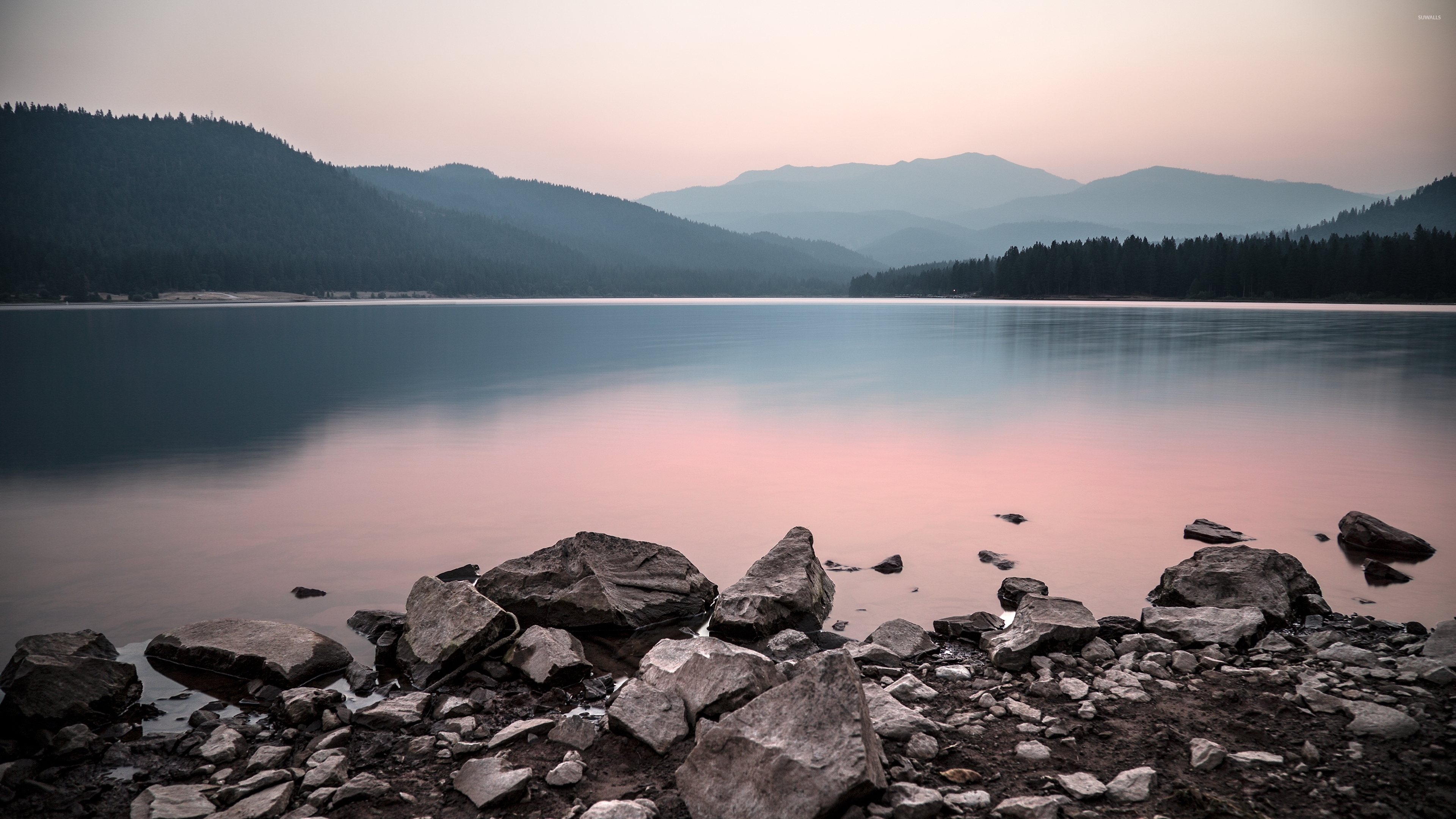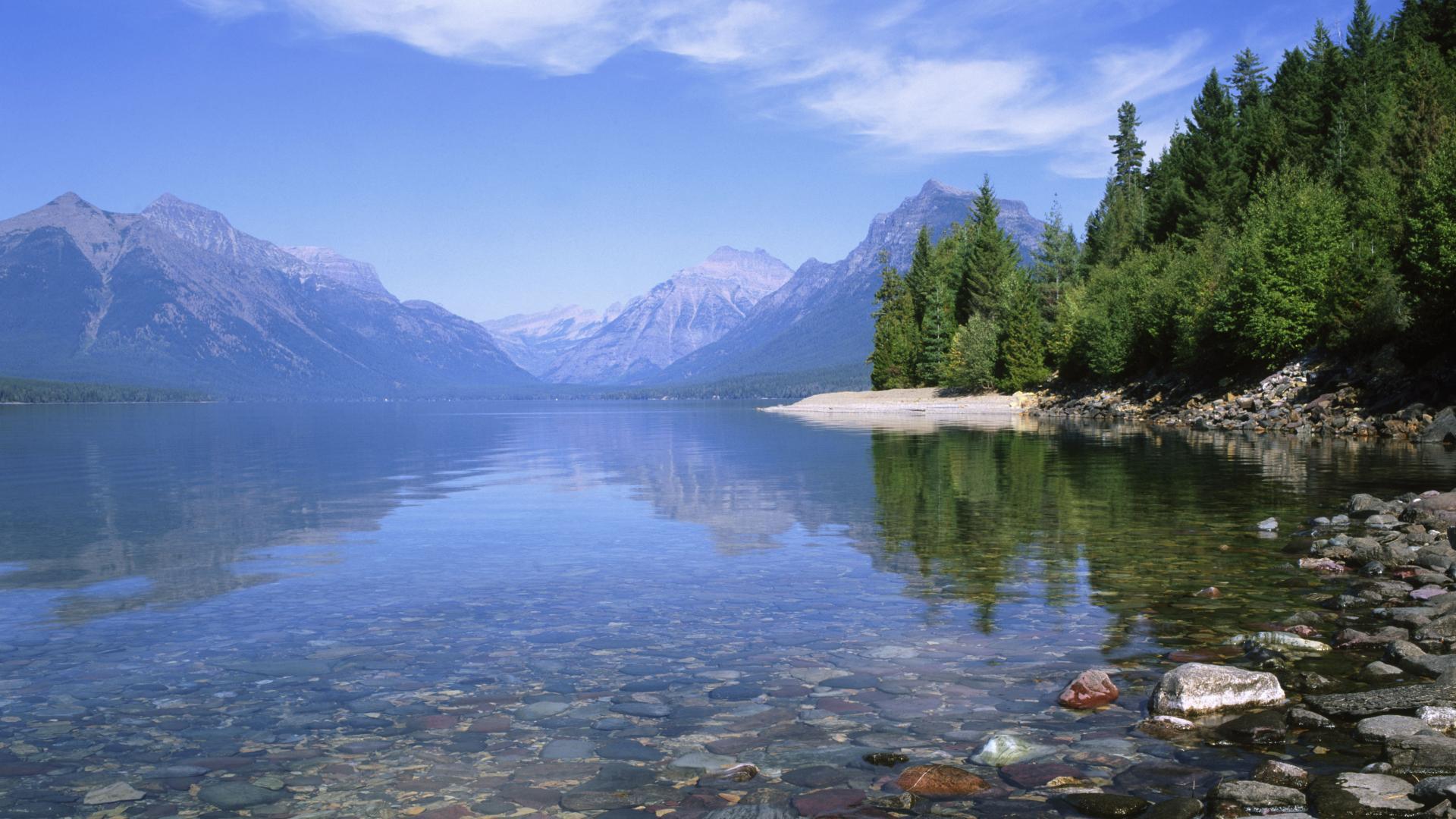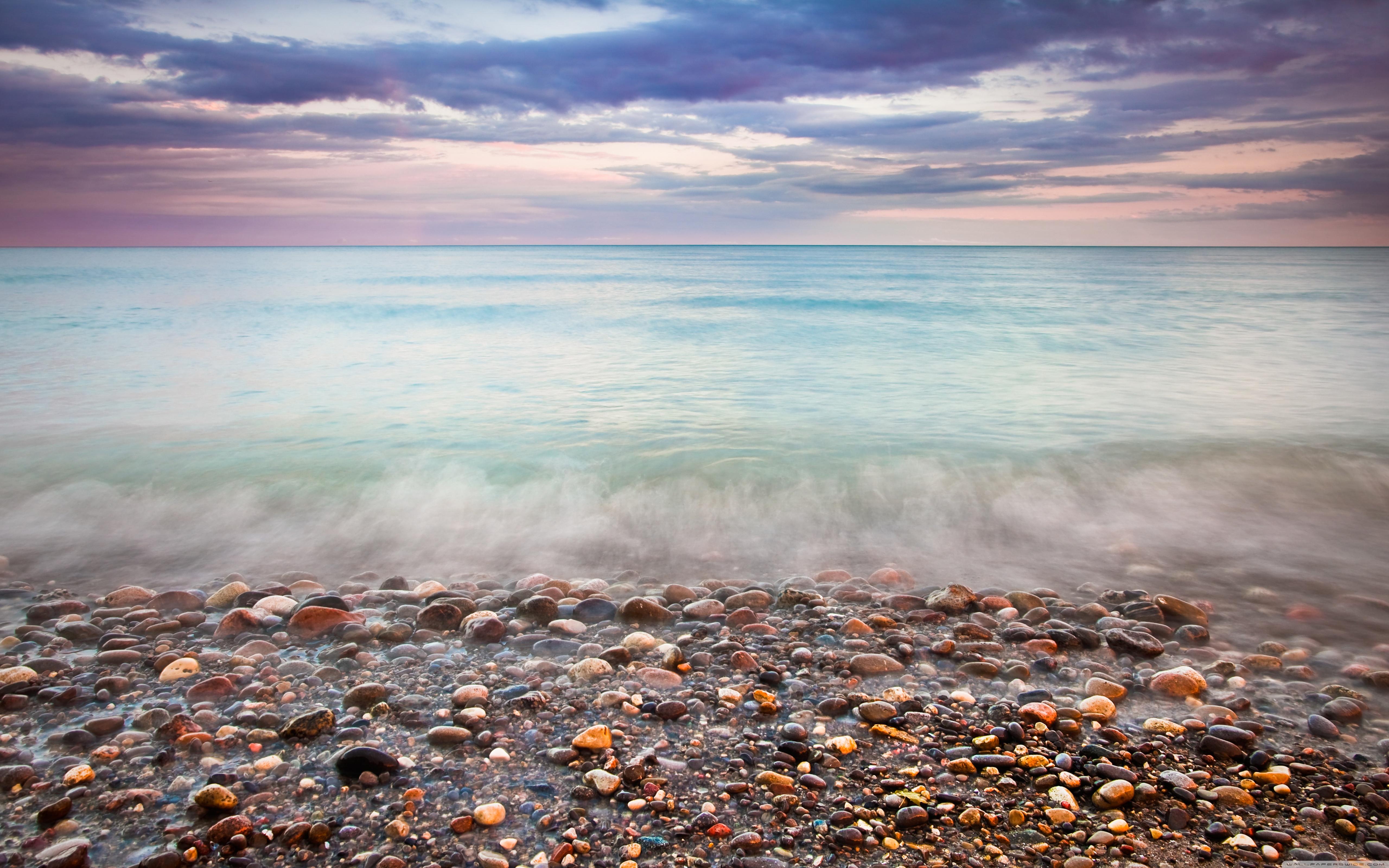Lake and shore – Lakes and shores, where water meets land, form captivating ecosystems that have long inspired human imagination and activity. From serene landscapes to bustling tourist destinations, these environments offer a wealth of recreational opportunities while also facing significant environmental challenges. This comprehensive exploration delves into the unique characteristics, human impacts, and conservation efforts surrounding lakes and shores, providing a deeper understanding of their ecological, social, and cultural significance.
Lakes and shores exhibit diverse geological features, including varying depths, shoreline shapes, and surrounding landscapes. These variations give rise to distinct lake and shore types, each with its own ecological dynamics. The ecological significance of these ecosystems lies in their ability to support a wide range of plant and animal species, contributing to biodiversity and providing essential ecosystem services.
Lake and Shore Characteristics
Lakes are captivating bodies of water found in depressions on the Earth’s surface, surrounded by shores that shape their character. These shores, in turn, are influenced by the geological forces that have shaped the landscape over time. Understanding the unique characteristics of lakes and their shores provides insights into the intricate interplay between water, land, and life.
Geological Features of Lakes and Shores
Lakes are formed through various geological processes, including glacial erosion, tectonic activity, and volcanic eruptions. These processes create depressions that are filled with water from precipitation, runoff, or groundwater. The shape and depth of a lake are determined by the underlying geological structures and the erosive forces that have acted upon it.Shores, on the other hand, are the transitional zones between lakes and the surrounding landscape.
They are shaped by the interplay of water erosion, wind action, and the deposition of sediments. The type of shore depends on the lake’s size, depth, and the surrounding topography.
Types of Lakes and Shores
Lakes and shores exhibit a wide range of diversity, each with its own distinct characteristics:
- Oligotrophic lakesare deep, clear, and nutrient-poor. They often have rocky shores with minimal vegetation.
- Eutrophic lakesare shallow, warm, and nutrient-rich. They typically have muddy shores with abundant aquatic plants.
- Dystrophic lakesare acidic and stained brown by dissolved organic matter. They often have peaty shores with stunted vegetation.
- Sandy shoresare composed of loose, unconsolidated sand. They are common in areas with strong wave action.
- Gravelly shoresare composed of small pebbles and stones. They are found in areas with moderate wave action.
- Muddy shoresare composed of fine-grained sediments. They are common in sheltered areas with low wave action.
Ecological Significance of Lake and Shore Ecosystems
Lakes and shores support diverse ecosystems that provide numerous ecological benefits. These ecosystems provide habitat for a wide range of aquatic and terrestrial organisms, including fish, amphibians, reptiles, birds, and mammals. The vegetation along the shores helps to filter pollutants, stabilize the shoreline, and provide food and shelter for wildlife.Lakes and shores also play an important role in the cycling of nutrients and carbon.
The sediments in lakes store nutrients and organic matter, which are released back into the water column through decomposition. This process supports the growth of aquatic plants and algae, which provide food for a variety of organisms.Understanding the characteristics and ecological significance of lakes and shores is crucial for their conservation and management.
By protecting these valuable ecosystems, we can ensure their continued existence and the benefits they provide to both humans and wildlife.
Human Impact on Lake and Shore Environments
Human activities can significantly influence lake and shore ecosystems, both positively and negatively.
Positive Impacts
- Recreational activities, such as fishing, boating, and swimming, can boost local economies and provide opportunities for recreation and relaxation.
- Habitat restoration projectscan improve water quality, enhance wildlife habitats, and increase biodiversity.
- Education and outreach programscan raise awareness about the importance of lake and shore environments and encourage stewardship practices.
Negative Impacts
- Pollutionfrom industrial, agricultural, and residential sources can contaminate water and harm aquatic life.
- Eutrophication, caused by excess nutrients, can lead to algal blooms, reduced oxygen levels, and fish kills.
- Shoreline developmentcan destroy natural habitats, disrupt sediment transport, and increase erosion.
- Invasive speciesintroduced through human activities can outcompete native species and alter ecosystem dynamics.
Strategies for Mitigation
- Land-use planningto control development and protect sensitive areas.
- Water quality regulationsto limit pollution and promote clean water.
- Erosion control measuresto stabilize shorelines and reduce sediment loss.
- Invasive species managementto prevent the spread and control of non-native species.
- Public education and engagementto foster understanding and encourage responsible stewardship.
By implementing these strategies, we can mitigate human impact and preserve the health and integrity of lake and shore environments for future generations.
Investigate the pros of accepting bars in lewisville in your business strategies.
Recreation and Tourism on Lakes and Shores: Lake And Shore
Lakes and shores offer a diverse range of recreational opportunities, attracting tourists from near and far. These environments provide ideal settings for various water-based activities, such as swimming, boating, fishing, and kayaking. Additionally, lakes and shores often feature scenic trails, picnic areas, and camping grounds, making them popular destinations for hiking, biking, and nature enthusiasts.
Tourism Industry
The tourism industry associated with lakes and shores has a significant economic impact on local communities. Tourists visiting these areas contribute to the local economy through spending on accommodation,餐饮, transportation, and other services. The tourism industry also creates employment opportunities in various sectors, including hospitality, retail, and recreation.
Lakes and shores also play an important role in the social fabric of local communities. They provide gathering places for residents and tourists alike, fostering a sense of community and shared experiences. The presence of lakes and shores can enhance the quality of life for residents and contribute to the overall well-being of the community.
Sustainable Tourism
To preserve the pristine beauty and ecological integrity of lakes and shores, it is essential to adopt sustainable tourism practices. This includes minimizing the environmental impact of tourism activities, such as reducing pollution, conserving water resources, and protecting wildlife habitats.
Sustainable tourism also involves supporting local businesses and initiatives that promote environmental conservation.
By embracing sustainable tourism practices, we can ensure that future generations can continue to enjoy the recreational and aesthetic benefits of lakes and shores while preserving these valuable ecosystems for years to come.
Conservation and Management of Lakes and Shores
Lakes and shores are vital ecosystems that face various threats, including pollution, habitat loss, and climate change. Conservation and management efforts are crucial to protect these fragile environments.
Threats to Lake and Shore Ecosystems
* Pollution:Industrial waste, agricultural runoff, and sewage can contaminate lakes and shores, harming aquatic life and degrading water quality.
Habitat Loss
Development, deforestation, and shoreline erosion can destroy or fragment critical habitats for fish, wildlife, and plants.
Check what professionals state about orlando hotels with disney shuttle and its benefits for the industry.
Climate Change
Rising temperatures, altered precipitation patterns, and increased storm intensity can impact lake levels, water quality, and ecosystem dynamics.
Conservation and Management Strategies, Lake and shore
* Water Quality Management:Implementing regulations to control pollution sources, promoting sustainable agricultural practices, and improving wastewater treatment can protect water quality.
Habitat Protection
Establishing protected areas, restoring degraded habitats, and implementing buffer zones around lakes and shores can safeguard critical ecosystems.
Sustainable Land Use Planning
Regulating development and land use practices to minimize impacts on lakes and shores, such as limiting impervious surfaces and promoting green infrastructure.
Climate Change Adaptation
Browse the implementation of things to do in woodinville in real-world situations to understand its applications.
Developing strategies to mitigate the effects of climate change, such as restoring wetlands to buffer against flooding, managing water resources to adapt to droughts, and protecting riparian zones to provide shade and stabilize shorelines.
Successful Conservation Initiatives
* Lake Erie Clean-Up:A multi-decade effort to reduce phosphorus pollution from agricultural sources has significantly improved water quality and revived aquatic life in Lake Erie.
Chesapeake Bay Program
A collaborative partnership between federal, state, and local governments to restore the Chesapeake Bay ecosystem has implemented pollution control measures, restored habitats, and improved water quality.
Great Lakes Restoration Initiative
A federal program dedicated to restoring and protecting the Great Lakes ecosystem has invested in water quality improvements, habitat restoration, and invasive species control.
In this topic, you find that hotel kavia plus is very useful.
Literary and Artistic Depictions of Lakes and Shores
Lakes and shores have captivated the human imagination for centuries, inspiring countless works of literature, art, and music. These depictions often reflect the cultural and historical significance of lakes and shores in different societies.
Symbolism and Significance
Lakes and shores have been used symbolically to represent a wide range of emotions and experiences. In literature, lakes are often associated with tranquility, mystery, and introspection. Shores, on the other hand, can represent transition, change, and the unknown.In art, lakes and shores have been depicted in a variety of ways.
Impressionist painters, such as Claude Monet, were drawn to the changing light and colors of lakes and shores. Romantic painters, such as Caspar David Friedrich, used lakes and shores to evoke a sense of awe and wonder at the beauty of nature.Music has also been used to capture the essence of lakes and shores.
Classical composers, such as Ludwig van Beethoven, wrote pieces that evoke the tranquility of lakes. Romantic composers, such as Franz Schubert, used music to express the emotional turmoil associated with shores.
Cultural and Historical Importance
Lakes and shores have played a vital role in the development of many cultures and civilizations. For example, the ancient Greeks believed that lakes were the home of the gods. The Romans built villas and resorts on the shores of lakes.
And the Chinese have a long history of painting and writing about lakes and shores.In modern times, lakes and shores continue to be important cultural and recreational destinations. People from all over the world come to lakes and shores to relax, fish, swim, and enjoy the beauty of nature.
Closing Summary
Lakes and shores stand as testaments to the interconnectedness of nature and human activity. While human actions can pose threats to these environments, they also offer opportunities for conservation and sustainable management. By understanding the delicate balance between recreation, tourism, and environmental preservation, we can ensure that these precious ecosystems continue to thrive for generations to come.
Common Queries
What are the main types of lakes?
Lakes are classified based on their formation process, with common types including tectonic lakes, glacial lakes, oxbow lakes, and volcanic lakes.
How do human activities affect lake and shore ecosystems?
Human activities can impact lake and shore ecosystems through pollution, habitat destruction, overfishing, and invasive species introduction.
What are the benefits of sustainable tourism practices for lakes and shores?
Sustainable tourism practices minimize environmental impacts, preserve natural habitats, and support local communities.



